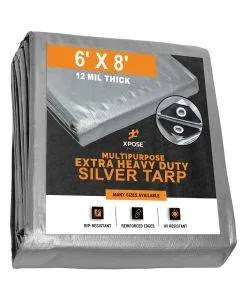Green Tarps The Eco-Friendly and Versatile Solution for Your Covering Needs
Green tarps are increasingly becoming a popular choice for those looking for effective, versatile, and eco-friendly covering solutions. Black Mesh truck tarps Whether you're a gardener, a camper, or someone in need of a durable covering option, green tarps offer a range of benefits that make them a go-to choice. This article will explore the advantages, uses, and tips for choosing the right green tarp for your specific needs.
Why Choose Green Tarps?
Green tarps are not just about the color; they come with a host of benefits that make them an ideal choice for various applications:
Aesthetic Appeal: The green color blends well with natural surroundings, making it less obtrusive and more visually pleasing for gardens, campsites, and outdoor spaces.
Eco-Friendly Options: Many green tarps are made from recycled or sustainable materials, making them an environmentally friendly option.
Versatility: Green tarps can be used for a wide range of applications, from gardening and landscaping to camping and construction.
Durability: Made from high-quality materials like polyethylene or vinyl, green tarps are designed to withstand harsh weather conditions, ensuring long-lasting protection.
UV Resistance: Green tarps often come with UV protection, making them ideal for prolonged outdoor use without deteriorating from sun exposure.
Types of Green Tarps
When looking for green tarps, you'll find a variety of types designed for different purposes:
Polyethylene (Poly) Tarps: These are the most common type of green tarps, known for being lightweight, waterproof, and affordable. They are perfect for general-purpose use.
Mesh Tarps: These are ideal for providing shade while allowing air flow, making them great for garden covers or shade sails.
Canvas Tarps: Made from durable fabric, green canvas tarps are breathable and perfect for covering outdoor equipment or creating shelters.
Vinyl Tarps: These tarps are highly durable and resistant to tears, UV rays, and mildew, suitable for heavy-duty applications like construction or industrial use.
Fire-Retardant Tarps: These tarps provide added safety by resisting flames, making them suitable for areas where fire hazards are a concern.
Common Uses for Green Tarps
Green tarps are incredibly versatile and can be used in numerous ways:
Gardening and Landscaping: Use green tarps to cover soil, protect plants from frost, or create a compost cover. Their natural color blends well with the garden environment.
Camping: Ideal for creating shelters, ground covers, or protecting gear from rain. The green color camouflages well in forested areas.
Construction: Use green tarps to cover building materials, create temporary shelters, or protect machinery from the elements.
Outdoor Events: Green tarps can be used to create shaded areas or protect seating and equipment from sun and rain during events.
Agriculture: They are perfect for covering hay bales, protecting crops, or creating windbreaks.
How to Choose the Right Green Tarp
Selecting the right green tarp involves considering several factors:
Size: Measure the area you need to cover to choose an appropriately sized tarp. Opt for a tarp slightly larger than your requirement for complete coverage.
Thickness: The thickness of a tarp, measured in mils, indicates its durability. For lightweight needs, 5-10 mil tarps are sufficient, 10 mil white plastic sheeting while heavy-duty applications may require 14 mil or thicker tarps.
Material: Choose a material that suits your needs. Polyethylene tarps are great for general use, while vinyl and canvas tarps offer more durability for demanding applications.
Grommets and Reinforcements: Look for tarps with reinforced edges and grommets for secure fastening. This prevents the tarp from tearing or blowing away.
UV Protection: If you plan to use the tarp outdoors for extended periods, ensure it has UV protection to prevent degradation from sun exposure.
Eco-Friendly Options: Consider tarps made from recycled materials or those labeled as environmentally friendly to reduce your ecological footprint.
Where to Buy Green Tarps
Green tarps are available from a variety of sources:
Online Retailers: Websites like Amazon, eBay, and specialty tarp shops offer a wide range of green tarps with the convenience of home delivery.
Home Improvement Stores: Stores like Home Depot and Lowe's carry green tarps in various sizes and materials, allowing you to see the product before purchasing.
Garden Centers: These stores often stock green tarps that are suitable for gardening and landscaping applications.
Specialty Tarp Retailers: Shops that specialize in tarps often provide a broader selection, including custom sizes and heavy-duty options.
Care and Maintenance of Green Tarps
Proper care and maintenance can extend the life of your green tarp:
Clean Regularly: Use a mild soap solution to clean the tarp, removing dirt and debris. Rinse thoroughly and allow it to dry completely before storing.
Store Properly: Fold and store the tarp in a cool, dry place to prevent mildew and damage from moisture.
Inspect for Damage: Regularly check for tears or holes and repair them promptly to maintain the tarp's integrity.
Avoid Prolonged Sun Exposure: Even UV-resistant tarps can degrade over time if exposed to continuous sunlight. Use shade or store them when not in use.

Comments
Post a Comment